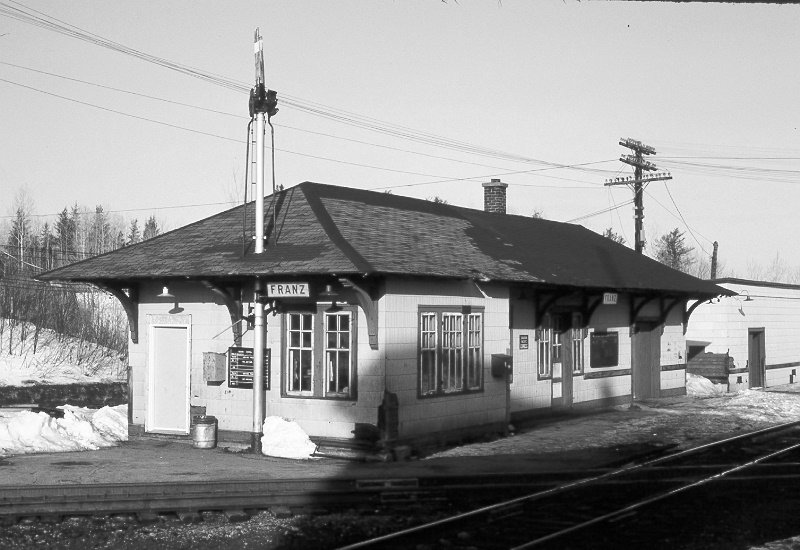
The Franz Swing
A Telegraph Operator Revisits This Historical Station
Dave LeBlanc

Photography by Ted Ellis, Dan Dawdy, Don Pugh, Cornelius Koelewijn , Christian Base and Mike Curtain
Comments and Submissions are Welcomed
| Built in 1912 by the Canadian Pacific Railway, the station at Franz served for decades as an interchange yard and passenger connection. In better days, Franz boasted a booming economy in forestry, transportation and mining. |
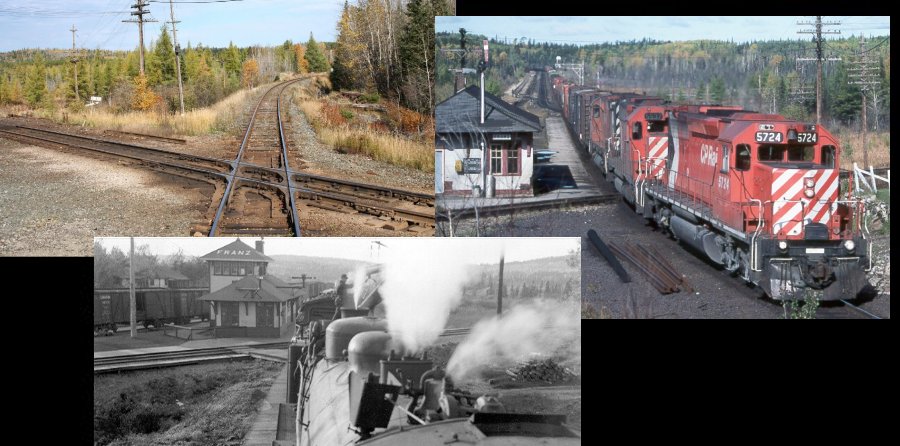
The Franz Swing
What was "The Franz Swing"? .........Well.... It was a job that had to be done, but no one wanted to do. The new operator on the block would get the job. The only thing worse than the Franz Swing was ......... A Franz Diversion Who worked the Swing? ..... Lots of people worked the Swing, most would never last very long. Some worked one shift and were never seen again. What was so different about the Swing? ..... Each station required 4 telegraphers to maintain a 24 hour vigil. Typical shifts were : Days, 4 to 12 and graveyard shift. The other operator worked the other's days off except one shift per week. That was left for the Franz Swing. Stations at White River, Franz, Chapleau and Cartier had a weekly visit from the swing. Cartier was eliminated from the swing in 1974. I was the last operator to have operated all 4 stations. How could you travel to so many stations? ..... By train of course! What made this job really interesting was ... I lived in Schreiber. I had to take a freight. Usually 902 or 952 were nice, but sometimes it was 954 or sometimes a slow drag. |
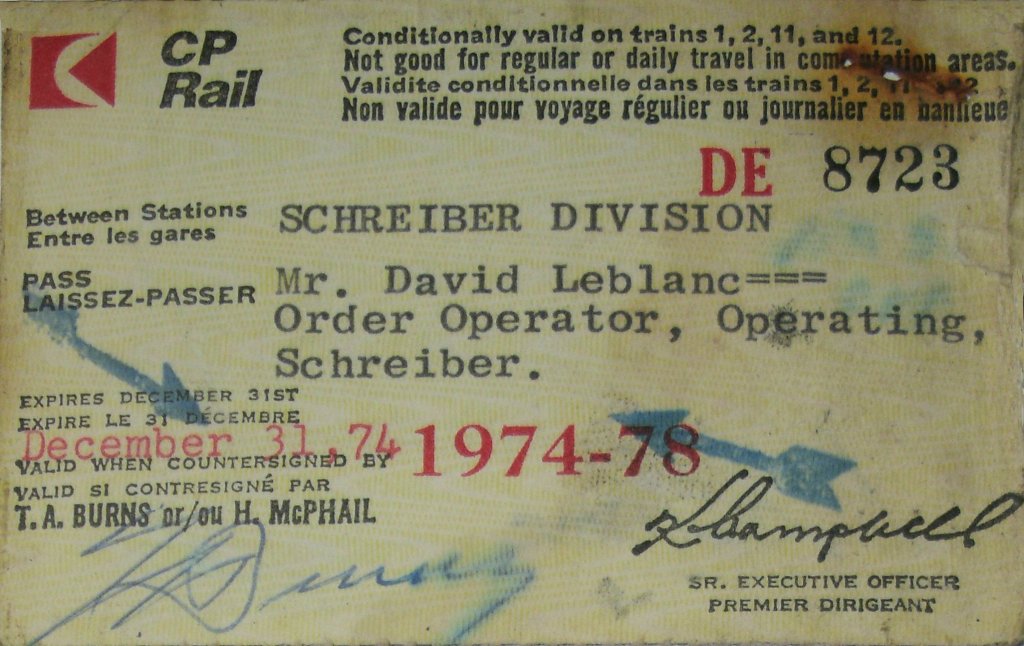 |
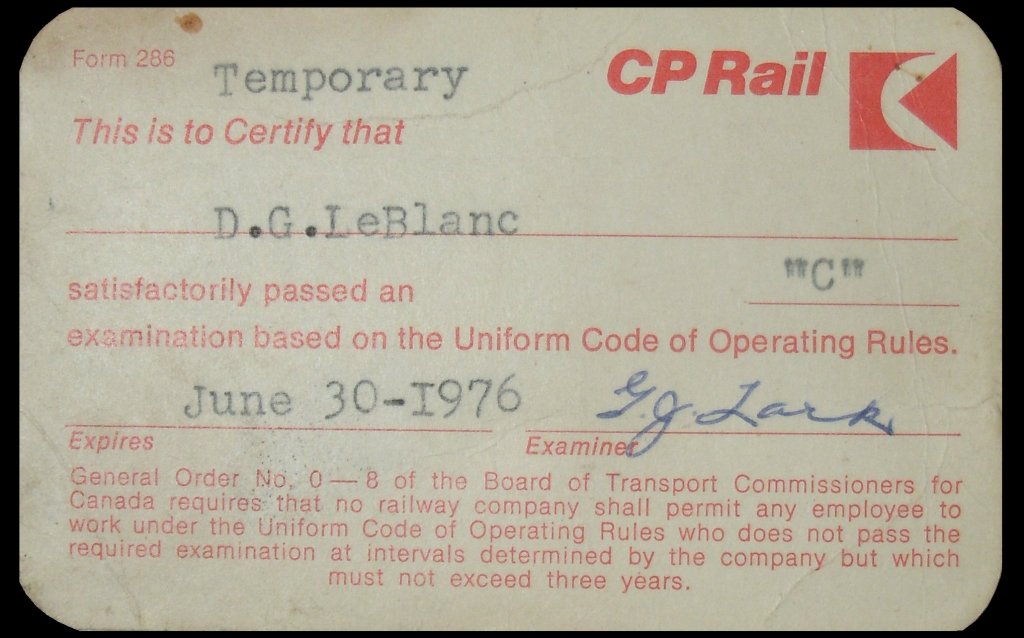 |
| Armed with a "C" Card and a Rail Pass, I only needed a lineup and a train! During the days, I would ride in the locomotives and at night in the caboose. |
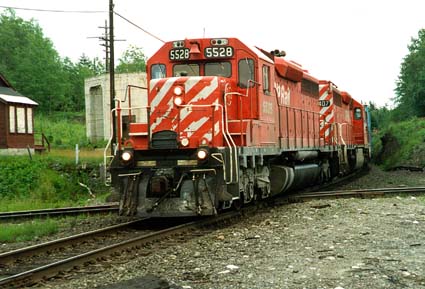
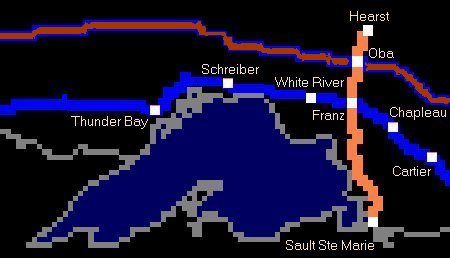
____________ Algoma Central Railway
_____________ Canadian Pacific Railway
____________ Canadian National Railway
Let's Swing For A Week!
| Our week begins on Monday in Schreiber, early in the day we start to keep an eye on the line up of eastbound trains. The Heron Bay Subdivision is highly picturesque. Lake Superior, rivers, parks, bridges outline this spectacular, but treacherous landscape. |
| Once we arrived at White River, I would walk with the train crew to the Trainman's bunkhouse. Operators were not normally allowed to stay in Trainman's quarters (Franz either!), but with no other alternative, an exception was made. I remember the bunkhouse crew as friendly and helpful. |
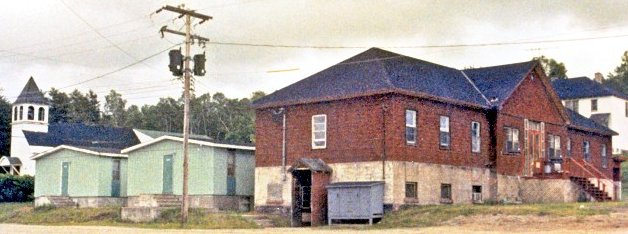
| The bunkhouse had newly constructed modules added at the rear of the older annex. When you entered the main area, you would sign into your room by selecting a blank slot on a larger blackboard beside the doorway. You could also post the time you wished to be awakened by the staff on duty. Some of the shift operators would take up residence in the old section. |
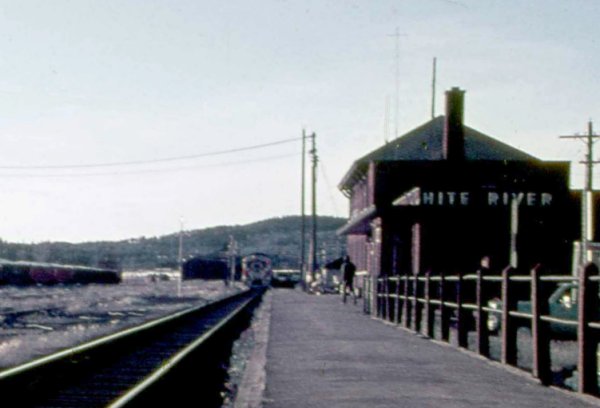
The station at White River is small but functional. Brick construction, located on Winnipeg St. (Across from the Post Office), it is later vintage, being built in 1958. During most shifts, the yard would be busy putting together the "Paper Train" for Franz. At 1600,
the Swing Operator came on shift. Alot of freight rolled
through on this station on this shift. 902, 952, 954, 956
from the west and 901, 921, 949, 953, and 965 would
receive orders here. The Budd car, Next morning, purchase a few groceries and climb aboard No 418 to Franz. Travelling aboard this Dayliner was most enjoyable. It took little more than and hour to reach the station that is the focus of this story. |
| Franz
in 1983...Showing signs of age, but still operational!
Notice the notch in the eave above the north
windows....That's where the CPR order board used to be. Click Image to Enlarge. |
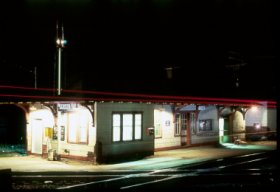 |
Here is a beautiful picture taken by Ted Ellis one evening. The streaks are from the van of a passing freight. |
Operator at Franz (circa 1961)
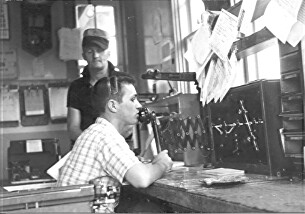
Not much changed from 1961 to 1974.
The switch box was removed following the installation of the Central Traffic Control System in Schreiber a few years later..
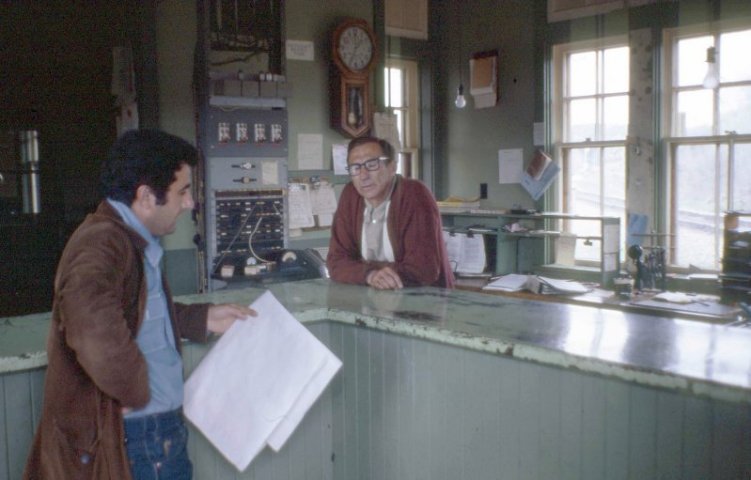
Michipicoten school teacher, Peter Bougadis speaks with Agent/Operator Jim Frame.
What Happened in Franz?
Every morning, before opening the station, I would check both waybill boxes. Often during night, trains would drop off any type of rolling stock for any number of reasons. Bad orders, low priority interchange and other freight which needed immediate attention. Charcoal was stored at Franz to keep heater cars warm during bad order set offs. Once the station was open, contact with Algoma Central dispatcher was first prority. A lineup was issued and was usually followed by a few copies of train orders. Contact with the CPR dispatcher came later with an inquiry about a paper train which was usually underway by that time. Most of the time, it would arrive before the Budd car, No 418. ACR No 2 came along around this time and would need to get a light from the CPR dispatcher to cross the diamond. Passenger inquiries, baggage, express and mail made passenger services quite busy. Once the paper train had cars set off in the yard, the waybills were entered into the station log. ACR No 5 would usually arrive in Franz before lunch. Once the waybills were logged, a yard check was necessary. With pen and journal, it was time to meet some rolling stock and hope the last conductor did his consist correctly. |
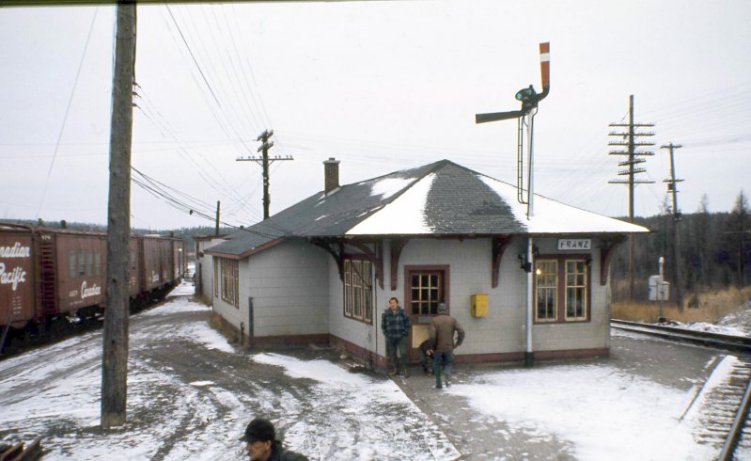
Work crews often occupied the shed track during times of local track or building maintenance.
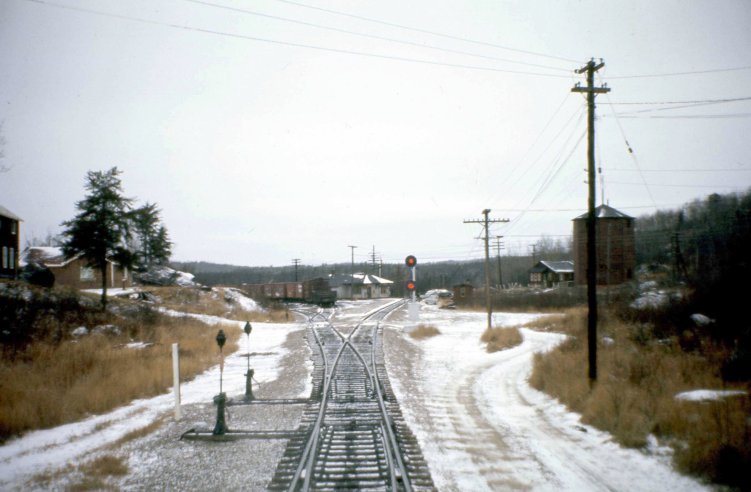
A Northbound ACR train waits for a light to cross the diamond.
.Here the Budd Car is departing Franz...An Eastbound freight crosses the Diamond.
Currently, the dayliner is last Budd RDC-4 in operational service.
Algoma Central No 5 "Steel Train"....Alco units have long since been retired.
Fast freights "highballing" at Franz.
No 2 Arrives with OCS Mail............Yard packed with Pulp and Steel.
Following
lunch, 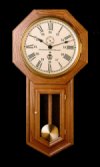 a time check, then No 418 would
arrive, followed by ACR No 2 and finally ACR No 6 (which
would often be late). At this time Friday, I was ready to
catch the next fastest train to Chapleau. No 2 came along
at 3 am, not a good time to wake up to a train to be at
work for 8 o'clock. It was better to take the freight
earlier, get a hotel room, have dinner, a cocktail and
get a much more rested sleep for operating Chapleau Station. a time check, then No 418 would
arrive, followed by ACR No 2 and finally ACR No 6 (which
would often be late). At this time Friday, I was ready to
catch the next fastest train to Chapleau. No 2 came along
at 3 am, not a good time to wake up to a train to be at
work for 8 o'clock. It was better to take the freight
earlier, get a hotel room, have dinner, a cocktail and
get a much more rested sleep for operating Chapleau Station. |
Clear and cold at mid-day in Chapleau. The Budd Car readies to depart.
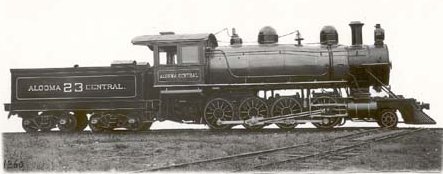
Algoma Central #23 (Circa 1900) 2-8-0 Baldwin.
I own the original photograph of this engine, which came through two estates, one of R. J. Klein.

The Old Water Tower ... TV Antenna and Level Ball (Indicating Empty). Old church behind.
Signal Displayed Yellow Southbound at Franz
Aboard ACR No.1 and No.6 at Franz after the station was moved.
Looking Northbound. Agent's house boarded up. Eastbound Freight in siding.
Crossing the diamond. Old water tower once stood along north side.
The tower was not stategically located and involved blocking two mainlines.
Even in modern times, during diversions, switching to the water tower was challenging.
Steaming across the diamond (Circa 1936) Photo by John Futhey
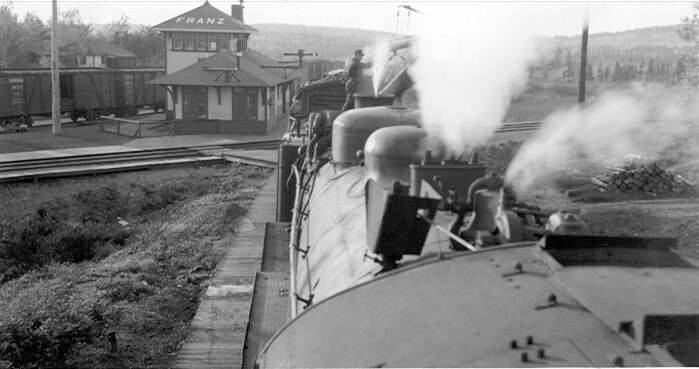
Some notable changes at Franz were the lever house above the station, boardwalk and wooden semaphores.
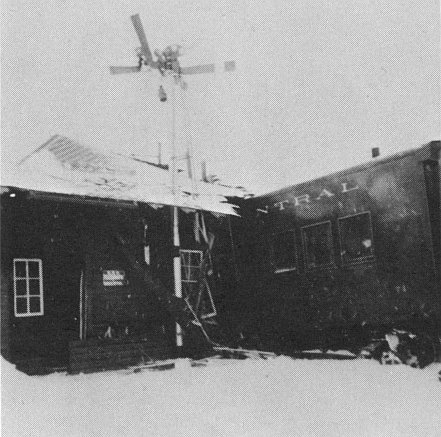 |
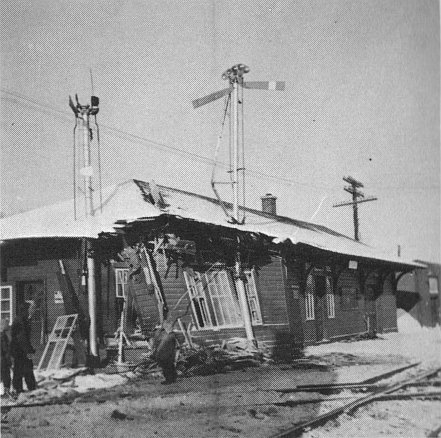 |
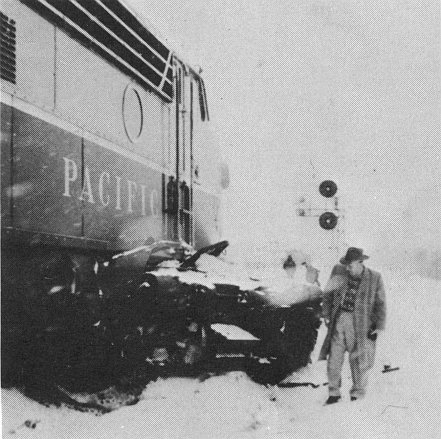
Though not seriously injured, Operator Yvan Beauparlant must have been shaken after this wreck.
A westbound CPR A-Unit struck the ACR steam car while it was crossing the diamond northbound.
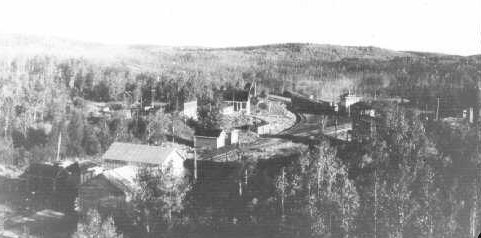
Viewed from the southeast section of town, Franz was at it's apex of community life.
The station tower overlooking an occupied shed track.
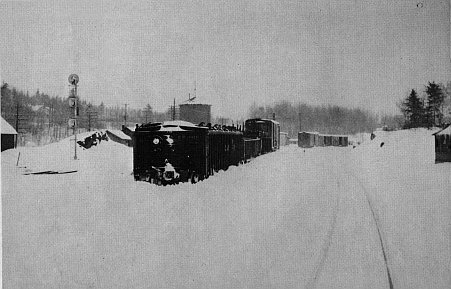 |
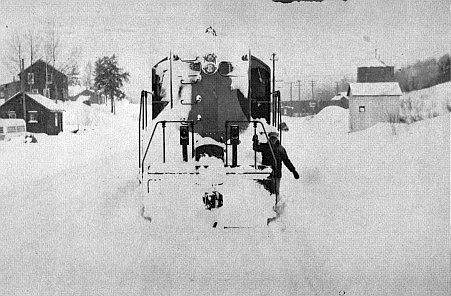 |
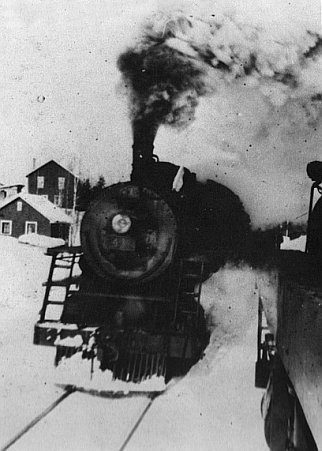
Heavy snow or cold weather rarely stopped trains.
A view from the lead of the shed track and lever house.
The water tower not fully enclosed and eastbound train sitting on the diamond. Circa 1940.
Summer 1961, No.2 Southbound crosses the diamond and passes the ranger station.
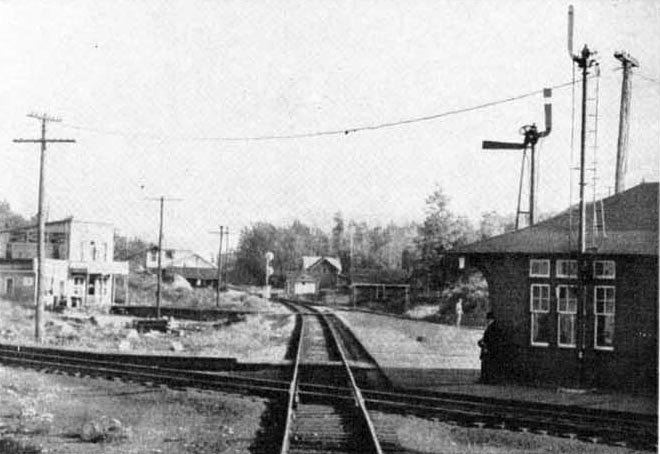
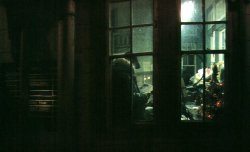 |
|
Franz diamond and town during the late 1940s.
The electric signals are still in service, although no longer controlled by the operator , but by the CP dispatcher.
(Thanks to Ian MacDonald the submission.)
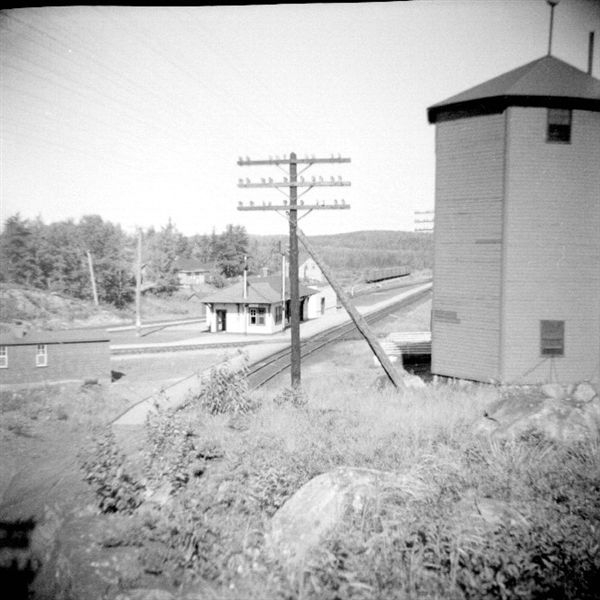
A view from the north side overlooking the station. Taken from the church yard.
After being closed in 1991 the station was relocated to the nearby community of Dubreuilville.
Newly renovated and open to the public.
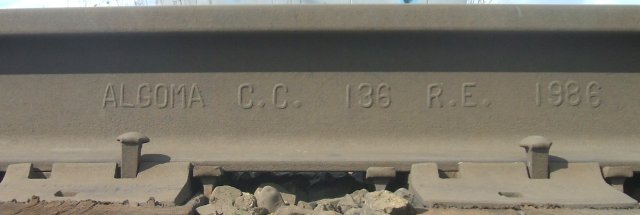
last updated on 02/13/2017